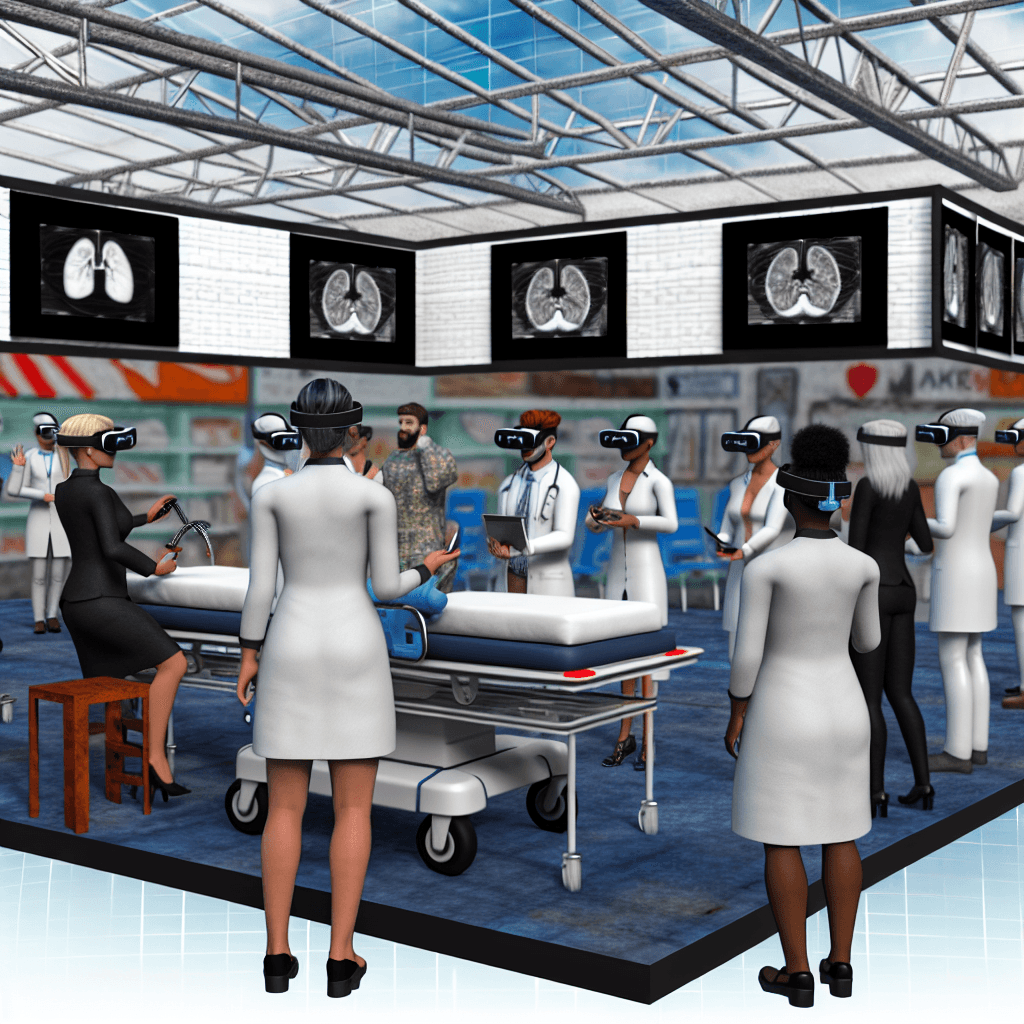Explore the expanding role of virtual reality in healthcare, enhancing treatment, training, and patient care efficiency.
Virtual Reality in Healthcare Market

Table of Contents
- Exploring the Impact of Virtual Reality in the Healthcare Market
- The Current Landscape of VR in Healthcare
- Statistical Insights
- Applications of Virtual Reality in Healthcare
- Case Studies Highlighting VR Success
- Benefits of Virtual Reality in Healthcare
- Challenges and Limitations
- The Future of VR in Healthcare
- Conclusion
Exploring the Impact of Virtual Reality in the Healthcare Market

The integration of virtual reality (VR) technology into the healthcare sector marks a significant leap towards innovative medical treatments and patient care strategies. This article delves into how VR is revolutionizing the healthcare industry, offering detailed insights into its applications, benefits, and future potential.
The Current Landscape of VR in Healthcare
Virtual reality in healthcare is a rapidly growing field, with applications ranging from clinical training to patient treatment and rehabilitation. The technology’s immersive nature allows for highly interactive and realistic scenarios to be created, which can be tailored to meet a wide range of medical needs.
Statistical Insights
According to a report by Grand View Research, the global virtual reality in healthcare market size was valued at USD 2.14 billion in 2020 and is expected to expand at a compound annual growth rate (CAGR) of 27.2% from 2021 to 2028. This growth is driven by increasing demand for innovative diagnostic techniques, neurological rehabilitation tools, and patient care management solutions.
Applications of Virtual Reality in Healthcare
Virtual reality’s versatility makes it applicable in various aspects of healthcare:
- Surgical Training and Planning: VR platforms help in training surgeons through simulation, providing a safe environment to practice and hone their skills without the risk of harming actual patients.
- Pain Management: VR has been used to manage pain, particularly in burn victims, by diverting patients’ attention away from painful procedures and reducing anxiety.
- Rehabilitation: VR assists in the rehabilitation of patients with physical injuries or neurological disorders by engaging them in virtual activities that promote movement and improvement.
- Mental Health Treatments: Therapeutic VR environments are used to treat conditions like PTSD, anxiety, and phobias, providing controlled exposures to help patients overcome their fears.
Case Studies Highlighting VR Success
Several case studies illustrate the effectiveness of VR in healthcare:
- VR in Surgical Training: A study conducted by Harvard Medical School reported that surgical residents trained with VR could perform 29% faster and were 6 times less likely to make errors compared to their non-VR trained counterparts.
- VR for Pain Management: The “SnowWorld” VR game has been used in pain management for burn victims, significantly reducing pain during wound care procedures.
- VR in Mental Health: A project by the University of Oxford used VR to treat patients with severe paranoia by allowing them to face social situations in a controlled virtual environment, which significantly reduced their paranoid episodes.
Benefits of Virtual Reality in Healthcare
VR technology offers numerous benefits in the medical field:
- Enhanced Training and Education: VR provides medical professionals with a realistic, yet risk-free environment to practice procedures and refine their skills.
- Improved Patient Outcomes: By providing more engaging and personalized treatment options, VR can lead to better patient adherence and improved treatment outcomes.
- Cost-Effectiveness: VR can reduce the need for real-life clinical resources, which can be expensive and limited, thus saving costs associated with healthcare training and patient care.
- Increased Accessibility: Remote VR treatments can reach patients in rural or underserved areas, improving access to quality healthcare services.
Challenges and Limitations
Despite its benefits, the adoption of VR in healthcare faces several challenges:
- High Initial Costs: The initial investment for VR hardware and software can be substantial, potentially limiting its accessibility to well-funded institutions.
- Technological Limitations: Issues such as image latency, resolution, and user discomfort can affect the effectiveness of VR applications.
- Need for Customized Solutions: Healthcare applications often require highly specialized VR solutions, which can be resource-intensive to develop.
The Future of VR in Healthcare
Looking ahead, the future of VR in healthcare is promising. Innovations in VR technology continue to enhance its practicality and effectiveness, paving the way for broader adoption. Future trends may include:
- Integration with AI: Combining VR with artificial intelligence (AI) could lead to smarter, more adaptive learning environments for training and therapy.
- Expansion into New Specialties: VR could extend its applications into more medical fields such as dentistry, dermatology, and more.
- Enhanced Remote Care: As VR technology becomes more accessible, its role in telemedicine and remote patient monitoring will likely grow.
Conclusion
The integration of virtual reality into healthcare has opened new avenues for enhancing medical training, patient care, and treatment outcomes. While challenges remain, the potential benefits of VR in improving the efficiency and effectiveness of healthcare services are undeniable. As technology advances, it is expected that VR will become an integral part of the healthcare landscape, offering innovative solutions that benefit both healthcare providers and patients alike.
In conclusion, the virtual reality healthcare market continues to evolve, driven by technological advancements and a growing recognition of its potential to transform traditional medical practices. With ongoing research and development, the future of VR in healthcare looks both exciting and promising, heralding a new era of medical technology.








